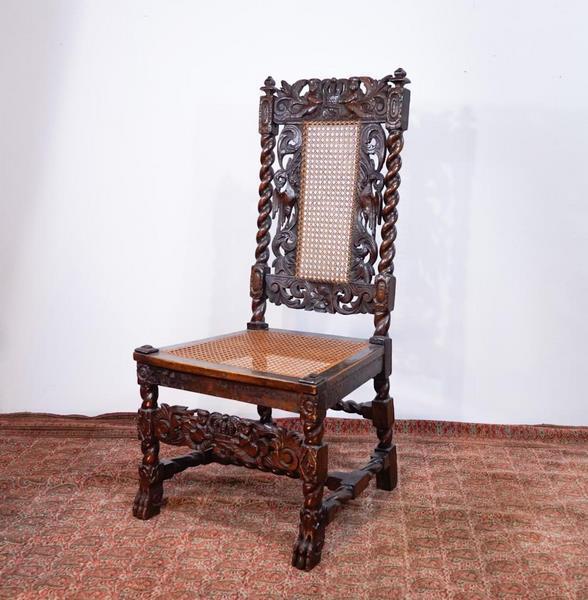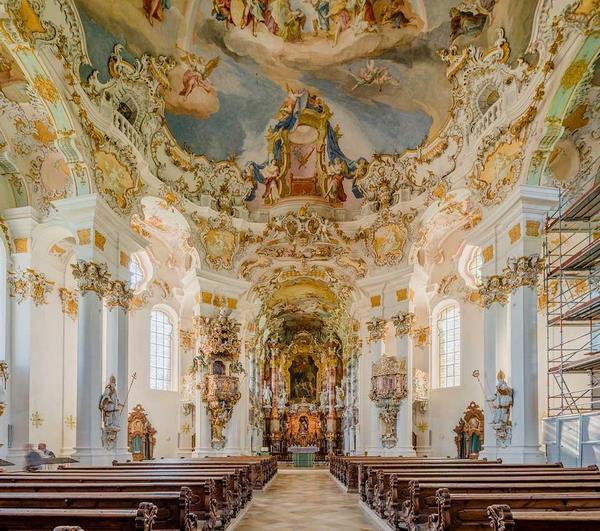LIFE IN 17TH CENTURY
During the 17th century, the population of England and Wales grew steadily. During this period England also became steadily richer. With about 4 million in 1600 and it grew to about 5 ½ million by 1700, trade and commerce also grew. By the late 17th century trade was an increasingly important part of the English economy. Meanwhile, industries such as glass, brick, iron, and coal mining have expanded rapidly.
For the upper class and the middle-class life grew more comfortable. But for the poor life changed little At the end of the 17th century a writer estimated that half the population could afford to eat meat every day. In other words, about 50% of the people were wealthy or at least reasonably well off. Below them, about 30% of the population could afford to eat meat between 2 and 6 times a week. They were ‘poor’. The bottom 20% could only eat meat once a week.

Paris in the 17th Century | Source: Wikipedia
BAROQUE STYLE
During this period, the Baroque style became the trend upon furniture design throughout western Europe. Large wardrobes, cupboards, and cabinets had twisted columns, broken pediments, and heavy moldings. The Low Countries adopted the Baroque Style in the 1620s. Extended late into the 17th century when Germany and England began to develop it. It owed much to the Asian influence that swept over Europe in the 17th century, when several maritime countries, particularly Portugal, the Netherlands, and England, established regular trading relations with India and East Asia.
Lacquered furniture and domestic goods were imported from the East, where Asian craftsmen also worked in a pseudo-European style from designs supplied by the traders. Before the end of the 17th century, Asian decorative techniques were being widely imitated in Europe, and the roots of the “Chinese taste” were firmly entrenched. Heavy tropical woods were also brought to Europe, and from these, furniture was made that borrowed much from the prevailing taste for “Oriental” elaboration.

Italian 17th century Baroque Painted Walnut Center Table | Source: Incollect.com
Furniture from the Baroque Era
From its very ornate and luxurious look, we can recognize furniture from the Baroque era. Intricate, elaborate, and exaggerated decorations are characteristic and most often include flowers, leaves, and cherubs. For those of you who’re wondering what cherubs, we will explain. A cherub is one of the unearthly beings who directly attend to God, according to Abrahamic religions. The numerous depictions of cherubim assign to them many different roles, such as protecting the entrance of the Garden of Eden. Like the chair below:

Charles II Walnut & Beech ‘Restoration’ Chair, cherub & crown, C 1680 $2,300.00 AUD | Source: Moorabool Antique Galleries
Baroque comes to English from a French word meaning “irregularly shaped.” Initially, it used a French word that referred to pearls. Eventually, it came to describe an extravagant style of art characterized by curving lines, gilt, and gold. The term Baroque arises from the Portuguese word “Barocco” which means “misshapen pearl”. The popularity of the style was in fact encouraged by the Catholic Church, which had decided at the Council of Trent that the arts should communicate religious themes and direct emotional involvement in response to the Protestant Reformation. The style typically uses classical orders and ornaments in a free and sculptural way that evokes movement and has a dramatic effect. Baroque style permeated most parts of culture, including gardens, architecture, music, and art.
Baroque in Architecture
Not only that Baroque in architecture emphasized bold massing, colonnades, domes, light-and-shade ‘painterly’ colors, and the bold play of volume and void. This is also the era when monumental staircases came into fashion. Baroque furniture was highly detailed and overly ornamented, yielding an overall look that is grand and lavish yet symmetrical and balanced. Baroque era interiors were luxurious. Furnishings were upholstered in rich velvet and damask, framed by giltwood and marquetry. The style remained fashionable until about 1725.
If you have read our previous article about Renaissance, you will wonder. How is Baroque art different from Renaissance? The answer is Renaissance art was a combined influence of nature, classical learning, and the individuality of man. The key difference between these two forms is that the hallmark of Baroque art is the ornate details. Meanwhile, the fusion of Christianity and science in order to create realism through art is a feature of Renaissance art.

Baroque Interior Design | Source: iDesignWiki
The French were the main adopters of the Baroque style. Louis the XIV’s reign marked the end of the Renaissance and the rise of this very influential style, often considered the most magnificent of the French period styles, writes the V&A. In this era, great furniture designers and cabinet-makers thrived. Andre Charles Boulle was the cabinet-maker to King Louis XIV and was one of the greatest artists in the field of inlaying ebony wood with tortoiseshell, brass, and other metals. He created the magnificent pieces that we have come to know as belonging to the Baroque Louis XIV age.
Reflecting Baroque Style
Reflecting Baroque style, furniture had plenty of details, with sumptuous and sometimes exaggerated decoration. Despite the elaborate ornamentation, delicate balance and harmonious integration of all elements are characteristic of Baroque compositions. The furniture pieces showed off symmetrical structures, strapworks, pilasters, religious themes, and minute details replicated on both sides. Twisted columns, which incorporated plenty of curves, gave a sense of dynamism. Four legs diagonally interlaced were commonly the only element to touch. Each section was decorated with proportioned heavy mouldings and pietra dura. Pietra dura is a mosaic-like technique in which colored stones are cut and shaped.
